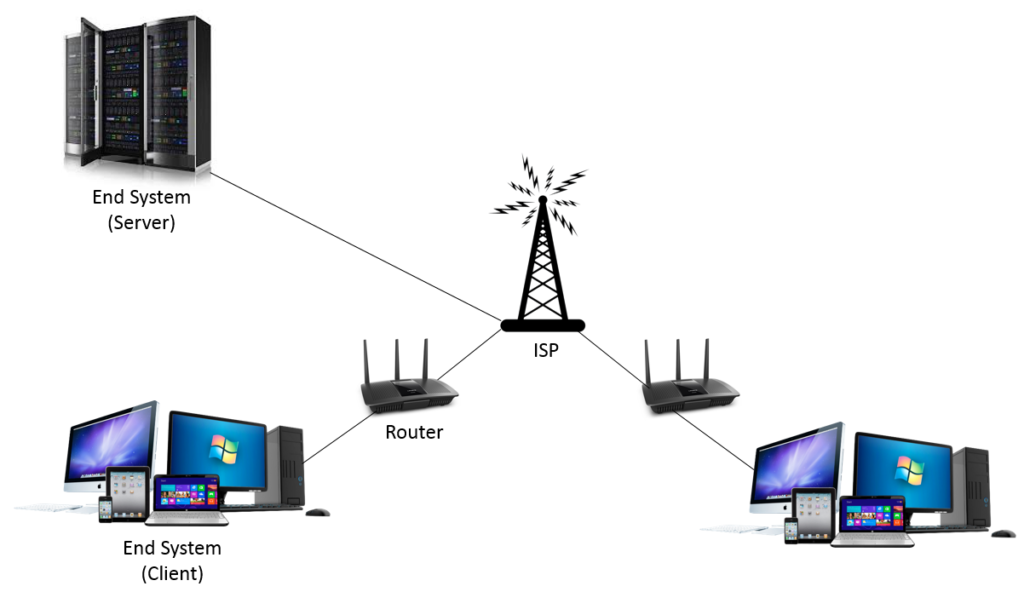Networking is the practice of linking multiple devices, such as computers, servers, and routers together, to enable communication and resource sharing. It works through a combination of hardware, software, and protocols that facilitate the transfer of data and information between devices. Here’s an overview of how networking works:
1. Physical Connectivity:
- Networking begins with physical connections. Devices are linked together through cables (e.g., Ethernet cables) or wirelessly using technologies like Wi-Fi or Bluetooth. These connections create a network infrastructure.
2. Network Hardware:
Key networking hardware components include:
- Routers: Routers are devices that connect different networks and route data between them. They also assign unique IP addresses to devices on the network.
- Switches: Switches are used to connect multiple devices within a local network (LAN). They use MAC addresses to determine where to forward data within the network.
- Network Interface Cards (NICs): NICs are hardware components installed in computers and other devices to connect them to the network.
3. IP Addresses:
- Every device on a network is assigned a unique IP (Internet Protocol) address. IP addresses help identify each device within a network and route data to the correct destination.
4. Protocols:
Networking relies on communication protocols, which are standardized sets of rules and conventions that govern how data is formatted, transmitted, received, and interpreted. Common networking protocols include:
- TCP/IP (Transmission Control Protocol/Internet Protocol): The foundation of the internet and most networks, TCP/IP ensures data reliability and integrity.
- HTTP (Hypertext Transfer Protocol): Used for web browsing.
- FTP (File Transfer Protocol): Used for transferring files.
- SMTP (Simple Mail Transfer Protocol) and POP/IMAP: Used for email.
- DNS (Domain Name System): Resolves domain names to IP addresses.
- DHCP (Dynamic Host Configuration Protocol): Assigns IP addresses dynamically to devices on a network.
- ARP (Address Resolution Protocol): Maps IP addresses to MAC addresses.
5. Data Transmission:
- When a device wants to communicate with another device on the network, it segments data into packets. These packets contain the data, source and destination IP addresses, and other necessary information.
- The device then sends the packets onto the network. Routers and switches help determine the path the packets take to reach their destination.
- Data can be transmitted over wired or wireless connections, with routers and switches managing the flow of data to ensure efficient and reliable communication.
6. Data Reception and Processing:
- Upon receiving the packets, the destination device’s NIC processes them, reassembles the data if necessary, and makes it available to the appropriate application or service.
7. Response and Acknowledgment:
- The destination device may respond by sending its own packets back to the source device, acknowledging receipt, or providing requested data.
8. Data Flow Control:
- Protocols like TCP manage the flow of data by establishing and maintaining connections, ensuring data integrity, and retransmitting lost or corrupted packets.
9. Security and Authentication:
- Network security measures, such as firewalls, encryption, and authentication protocols, protect data and network resources from unauthorized access and cyber threats.
10. Monitoring and Management:
- Network administrators use specialized software and tools to monitor network performance, diagnose issues, configure devices, and optimize the network for efficiency.
11. Internet Connectivity:
- For internet access, routers connect local networks to the global internet. Internet Service Providers (ISPs) play a crucial role in providing this connection.
Overall, networking is a complex and dynamic field, and it enables the functioning of the Internet, local area networks (LAN), wide area networks (WAN), and countless other communication systems that are essential in today’s digital age.
